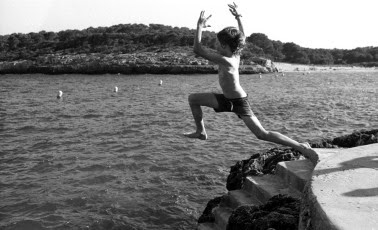Sometimes I have no idea what I’d do if I wasn’t a dad. Put another way, I have no idea what I’d do if I wasn’t heading along to swimming lessons in the local municipal pool each Saturday morning with my four year old boy in tow. Take last Saturday. I sat back and watched his 30 minute lesson. There were six in his class, and two classes in the pool. The big pool had around six classes going on.
At no point did I see any written feedback. There was something injected into me when asked to lead on feedback that almost made me object in disgust. No written feedback? But how did they learn? Thing is, that’s bonkers. I watched individual feedback being given to every young person. Verbal feedback that was linked to what the teacher had seen a moment before. All of the students could do something they couldn’t by the end of the lesson. Of course, as my son is four and can’t do very much, he’s learning quickly. He was also under the promise of cake if he took part and tried his best.
What’s the point? How often do we sit back and watch what is going on in a lesson before combing the exercise books for red, green, purple, indigo, pink, yellow pen and sheets and WWW, EBI, WMD, WID, FOB, FOD comments? How many children do we speak to to find out what they know about what they are learning and where they go? I worry about the message we could give by prioritising with written feedback. Is it at the expense of the ‘off-the-cuff’ comment. The conversation between a skilled teacher who’s just spotted something and put it right. Responding immediately.
Of course, I know that in the bipolar twitter world, this will be seen as being against written feedback or some other madness. Truth is, the world is in at least 1,534,625 shades of grey (or is it green?). I’m quite a believer in written marking – especially the light touch stuff that picks up misconceptions and important things, like spelling and using capital letters correctly. And, in my view, it is important to check that the books are being kept neat and free of knob pictures.
My point?
Feedback is one of the humdrum, everyday things that make the best teachers the best. So what are we doing to ensure teachers have the time to do it well? Do we expect to see ‘showcase’ lessons with all the whizz bang bumph and chastise those seen during a learning walk where children working in silence? We need to really get away from measuring the ‘lesson’ and start worrying about the subject knowledge of those delivering the content and what they are doing every day. Day in day out. The humdrum. Stuff like marking, feedback and teaching the correct terminology.
Is there anything wrong with walking into a lesson and finding a class engaged, independently (oh my word, I know that’s been bipolarised too but bugger it) in a fairly low level textbook activity. Perhaps an enquiry (us geographers are good at that, indeed every lesson should be one). And there’s the great teacher, working their way around the class. Talking to each individual student about their last meaty piece of work. Explaining to them, using actual words from their mouth, a conversation if you like, what they did well, and how to apply that to the next topic. At the same time, giving a few tips about how to improve and how that links to the next topic. Oh, and telling them off for those knob drawings.
How much of our CPD focused on the whizz bang instead of the humdrum? Is it time to readdress the balance?
I’m far from being expert, but if I were to develop a teacher profile, feedback would be on there. And results. There may even be room for some comments about what’s seen in lessons. But how will they know how good they are as teachers? They will have squeezed the maximum level of progress out of every single student. Not within a 20 minute timescale, but over the entire time those young people are in their charge.
Boy jumping photo credit.
Do not sit on the stairs photo credit.


What if the subject is Art and they're life drawing... ;)
ReplyDeleteHa ha! I'm not sure what it's like in the private sector Alan, but as the LM of Art, they are probably the subject that provides the most feedback during life drawing. It's verbal, continuous, when needed and timely.
Delete